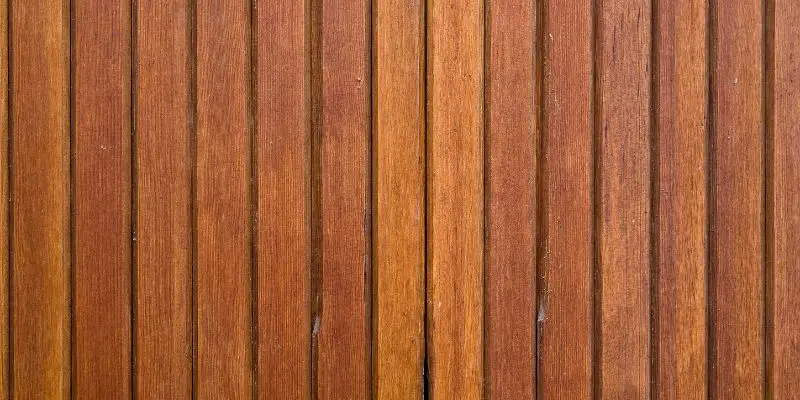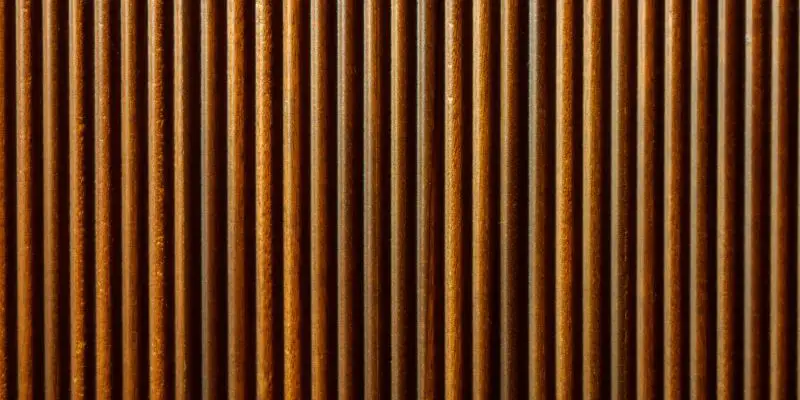To find studs behind wood paneling, use a stud finder or tap the paneling to listen for changes in sound that indicate a stud’s location. Other methods include using a magnet to detect screws or nails securing the paneling to the studs.
Finding studs behind wood paneling is essential for tasks like hanging heavy objects or performing renovations. Knowing the precise location of the studs ensures proper support and prevents damage to the paneling. We will explore various methods for locating studs behind wood paneling, including using tools like a stud finder, tapping the paneling, and employing a magnet to detect screws or nails.
By the end, you’ll have the knowledge and confidence to effectively find studs behind wood paneling for your specific needs.
Understanding The Importance Of Locating Studs
The Role Of Studs In Supporting Wood Paneling
Studs play a crucial role in providing structural support to wood paneling. They serve as the framework onto which the panels are attached, ensuring stability and durability. Without proper support from studs, wood paneling may sag or bow over time, compromising both the aesthetics and structural integrity of the installation.
Impact Of Accurate Stud Location On Hanging Objects Securely
Locating studs accurately is essential for securely hanging objects on wood paneling. By identifying the studs, you can ensure that heavy items, such as shelves, artwork, or wall-mounted fixtures, are anchored securely, preventing potential damage to the paneling and ensuring the safety of the items being mounted. Accurate stud location also minimizes the risk of the mounted items pulling away from the wall, which could result in costly damage and potential safety hazards.

Tools And Equipment For Stud Detection
If you are planning to hang heavy items on your wood paneling, it’s crucial to locate the studs for secure anchoring. A multitude of tools and equipment are available for this purpose, each with its own advantages and limitations. Let’s delve into the various options for stud detection.
Electronic Stud Finders
Electronic stud finders utilize sensors to detect changes in wall density, accurately pinpointing the presence of studs behind the wood paneling. When activated, they emit a sound or visual indicator to denote the stud’s position, making it an efficient and user-friendly option for homeowners.
Magnetic Stud Finders
Magnetic stud finders operate by identifying metal fasteners within the stud. By slowly moving the device across the wall, it attracts to the screws or nails, highlighting the exact location of the stud. This method is simple and inexpensive, offering a reliable solution for stud detection.
Manual Stud Detection Methods
Manual stud detection involves techniques such as tapping and visual inspection of the wall to locate the studs. While this method requires more practice and precision, it serves as a backup when electronic or magnetic tools are not available, ensuring that you can still locate the studs without specialized equipment.
Step-by-step Guide To Find Studs Behind Wood Paneling
Uncover the studs behind wood paneling with a step-by-step guide. Locate studs using a stud finder, measuring from an electrical outlet, or tapping the wall to listen for solid spots, ensuring a secure anchoring point for mounting heavy objects.
Preparing The Wall Surface
Before you start finding studs behind wood paneling, it’s essential to prepare the wall surface. Remove any art, decorations, or furniture that may obstruct your access to the wall. Use a clean, damp cloth to wipe down the wood paneling and ensure a clear surface for finding the studs.
Using A Stud Finder Effectively
To locate the studs behind wood paneling, a stud finder can be an incredibly useful tool. Ensure the stud finder is placed flat against the wood paneling and activate it according to the manufacturer’s instructions. Slowly move the stud finder horizontally along the wall, making note of any visual or audible indicators of a stud’s presence.
Locating Studs Without Specialized Tools
If you don’t have access to a stud finder, fear not! There are alternative methods to locate studs behind wood paneling without specialized tools. One method is to knock on the wood paneling and listen for a solid, rather than hollow, sound. Another approach involves using a strong magnet to detect the metal fasteners securing the wood paneling to the studs, thereby inferring the locations of the studs themselves.
Expert Tips For Successful Stud Location
When it comes to hanging heavy items on your walls, finding the studs is crucial for stability and safety. Expert tips for successful stud location are essential to ensure a secure mounting. Understanding common stud placement patterns, overcoming challenges in detecting studs, and ensuring accuracy in stud detection are key factors in locating studs accurately.
Understanding Common Stud Placement Patterns
Studs are typically spaced 16 or 24 inches apart and are placed on either side of a window or door frame. In some cases, studs may deviate from the standard pattern, especially in older homes or custom-built structures. By understanding these common patterns, you can narrow down the search area for studs behind wood paneling.
Overcoming Challenges In Detecting Studs
Detecting studs behind wood paneling can pose challenges, especially when the paneling is thick or has multiple layers. Using a stud finder specifically designed for thick walls can help overcome this challenge. Additionally, identifying the seams in the paneling can provide hints about the possible stud locations.
Ensuring Accuracy In Stud Detection
To ensure accurate stud detection, it’s essential to use reliable tools such as electronic stud finders or magnetic stud finders. Starting the search from electrical outlets or switches can also aid in locating studs, as they are typically attached to studs. Marking the potential stud locations and verifying them with a small nail or drill can further ensure accuracy.

Ensuring Secure Object Hanging On Wood Paneling
When you want to hang objects on wood paneling, it’s crucial to ensure they are securely mounted to the studs behind the paneling. This ensures that your items are safely held in place and reduces the risk of damage to the paneling. Here’s a guide to help you secure your objects properly and ensure the integrity of your wood paneling.
Securing Objects To Located Studs
Securing objects to the studs behind wood paneling is the most reliable way to ensure the items are held securely. Here’s how you can locate the studs and mount your objects:
- Use a stud finder to locate the studs behind the wood paneling.
- Mark the stud locations with a pencil.
- Choose the appropriate hanging hardware (such as screws or nails) based on the weight of the object you want to hang.
- Align the hanging hardware with the marked stud locations and secure the object to the studs.
Alternatives For Hanging In Non-stud Areas
If you need to hang objects in areas without studs, consider using these alternative methods:
- Install wall anchors in the drywall to provide additional support for hanging objects.
- Use heavy-duty adhesive hooks that are designed to hold significant weight without damaging the paneling.
- Consider using tension rods for hanging lightweight items, such as curtains or small decorations.
Final Checks For Wall Integrity After Hanging Objects
After you have hung your objects, it’s essential to perform a final check to ensure that the wall integrity is maintained:
- Inspect the paneling for any signs of damage or stress around the mounted objects.
- Ensure that the hanging hardware is securely attached and not causing any strain on the paneling.
- If using wall anchors, verify that they are firmly in place and can support the weight of the object.
Frequently Asked Questions Of How To Find Studs Behind Wood Paneling
Does A Stud Finder Work On Wood?
Yes, a stud finder can detect wood studs in walls. It uses electrical currents to locate the density change in wood.
How Do You Mount A Tv On Paneling?
To mount a TV on paneling, use a stud finder to locate and mark the studs. Then, attach a mounting bracket securely to the studs with screws. Finally, lift the TV onto the bracket and secure it in place according to the manufacturer’s instructions.
Can A Stud Finder Find Studs Through Plywood?
Yes, a stud finder can typically find studs through plywood as long as the plywood is not too thick.
How Do You Hang Heavy Items On Paneling?
To hang heavy items on paneling, use wall anchors or toggle bolts for strong support. Find the wall studs for added stability. Pre-drill pilot holes to prevent paneling from splitting. Use appropriate screws and mounting hardware for secure attachment. Always follow weight limits specified for the paneling.
Conclusion
Finding studs behind wood paneling doesn’t have to be a daunting task. With the right tools and techniques, you can locate and mark studs accurately. This will ensure the stability and security of your wall fixtures and make your projects a breeze.
Happy stud-finding!



One thought on “How to Find Studs behind Wood Paneling : Expert Tips for Successful Locating”